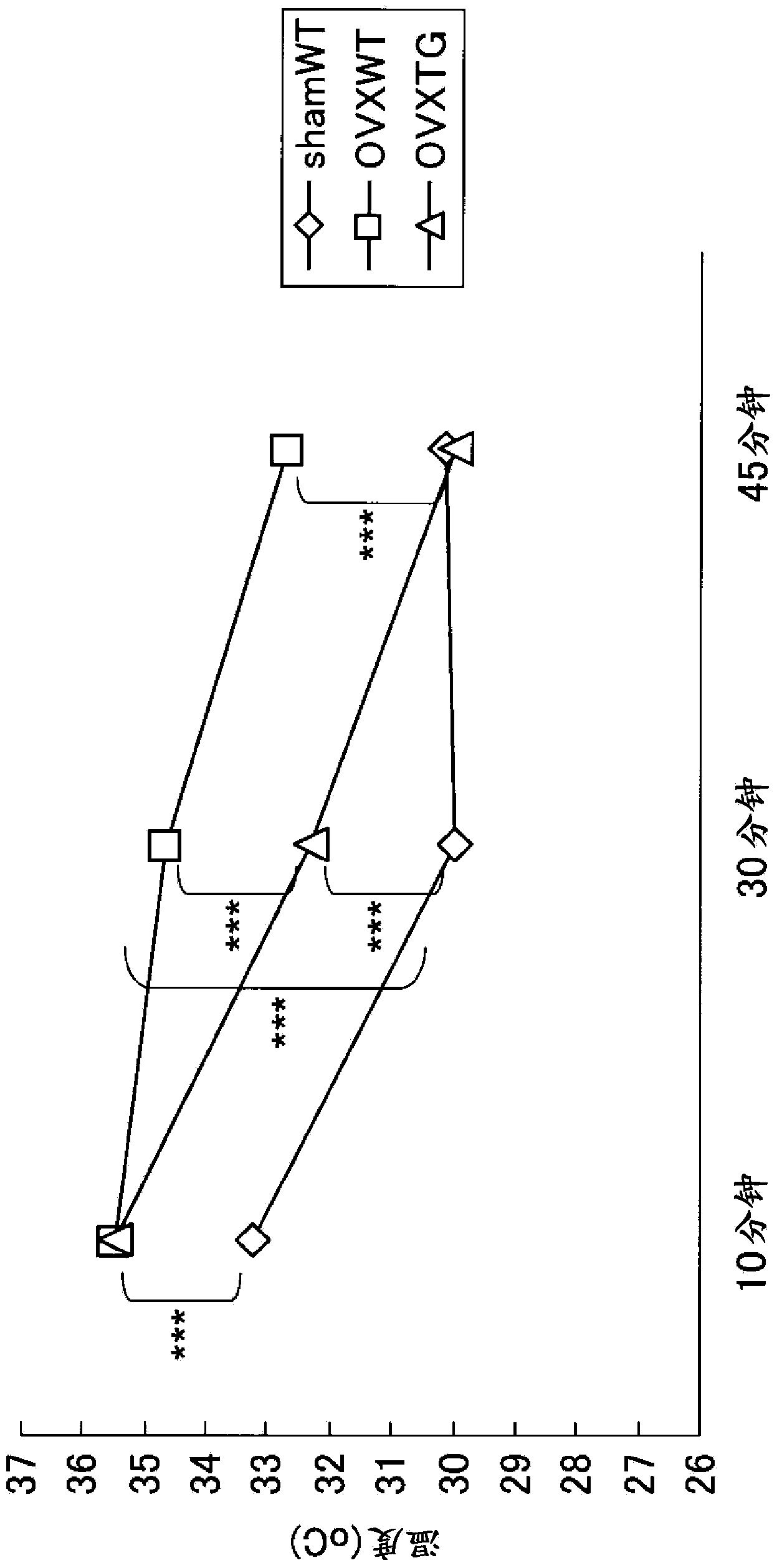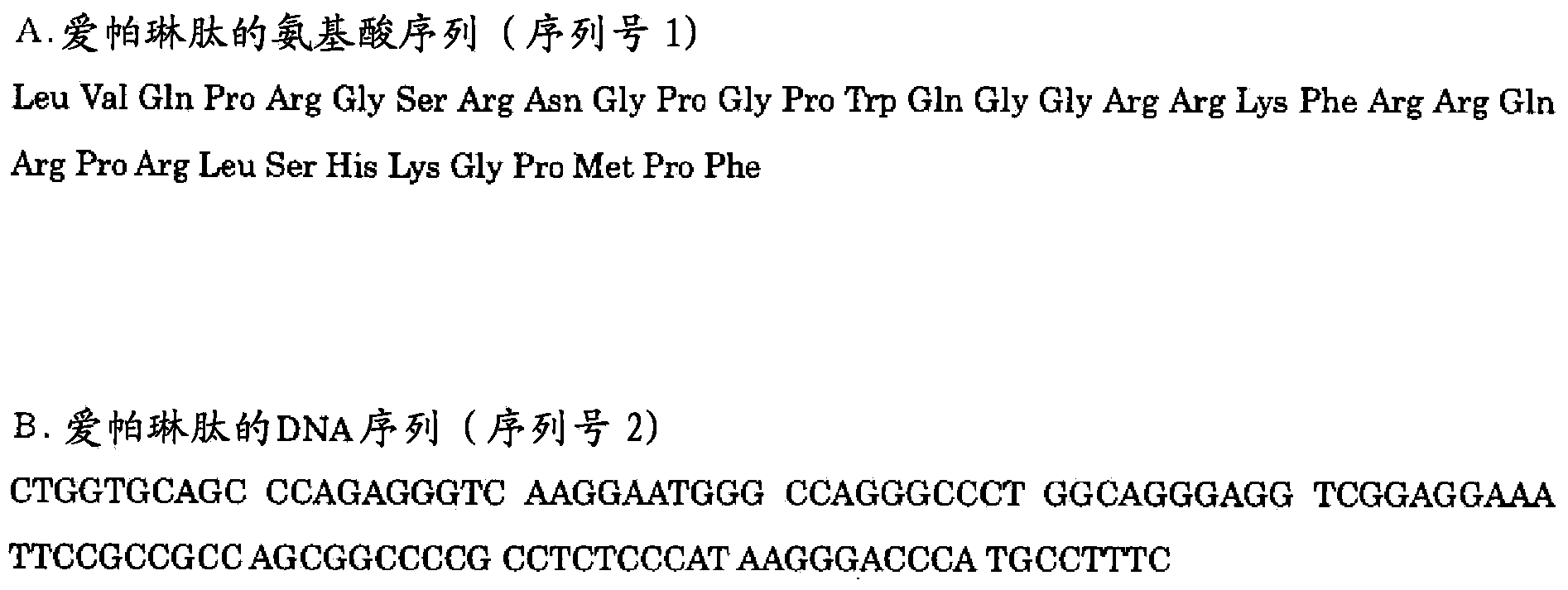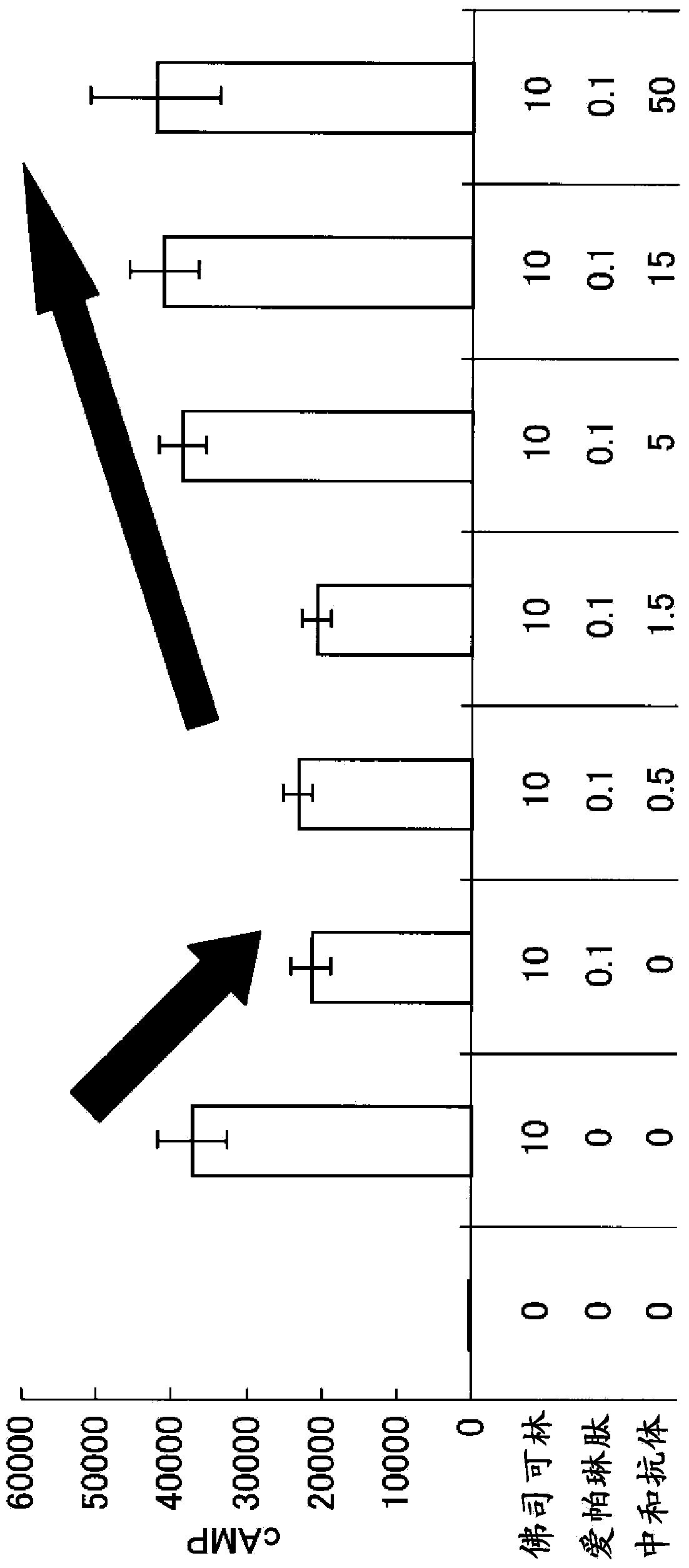Hot flash suppressant
A technology for suppressing hot flashes, applied in the field of suppressing hot flashes, can solve unclear problems
- Summary
- Abstract
- Description
- Claims
- Application Information
AI Technical Summary
Problems solved by technology
Method used
Image
Examples
Embodiment 1
[0103] Example 1: The hot flash inhibitory effect of apelin peptide
[0104] Under the control of the K14 promoter, the C57 / BL6 mice (hereinafter referred to as apelin high-expressing mice, apelin TG, or TG) that make apelin highly expressed in the epidermis and corresponding wild animals Type mice (C57 / BL6) (N=5, all 8-10 weeks old) underwent ovariectomy to produce climacteric apelin high-expressing mice and climacteric wild-type mice. In addition, wild-type mice subjected to sham surgery were used as controls. Four weeks later, nifedipine (50 μg / kg) as a vasodilator was intraperitoneally administered, and after 10 minutes, 30 minutes, and 45 minutes after the administration, the temperature recording method (Somatoray SA TH9100MR, NEC / Avio infrared technology) to analyze temperature changes in the tail.
[0105] result
[0106] For the wild-type mice (shamWT) of the control, the skin temperature that rose after 10 minutes of vasodilator administration returned to a s...
Embodiment 2
[0107] Example 2. Establishment of a screening system for apelin-like agents
[0108] Culture of APJ expressing cells
[0109] In NIH3T3 cells, the apelin receptor APJ was highly expressed, and the cAMP-luciferase reporter vector was transfected in a stable strain selected by hygromycin (provided by Professor Takakura Nobuyuki, Institute of Microbial Diseases, Osaka University). It was used in the cAMP luciferase assay below. The culture was carried out using DMEM medium (Invirtogen) containing 200 μg / ml hygromycin and 10% FBS. On the day before the assay, inoculate 2.0 × 10 per well in a 96-well plate 5 cells were cultured in DMEM medium containing 10% FBS and 200 μg / ml hygromycin.
[0110] cAMP luciferase assay
[0111] After culturing overnight, the medium was removed with a pipette, and replaced with 100 µl per well of DMEM medium without additives. After 3 hours, the GloSensor TM 4 μl of cAMP reagent (Promega) was added to each well, shielded from light, and equi...
Embodiment 3
[0113] Example 3. Screening of apelin peptide-like agents (1)
[0114] As candidate drugs, about 250 kinds of cosmetic raw materials (Shiseido Co., Ltd.) were used to select an apelin-like drug through the screening system established in Example 2.
[0115] Specifically, the candidate drug was adjusted to 400 μg / ml, and 50 μl (final concentration: 100 μg / ml) was added to each well instead of the apelin peptide used in the cAMP luciferase assay of Example 2, and the same procedure as in Example 2 was carried out. 2 for the same determination.
[0116] Such as Figure 4 As indicated, saffron extract, pine tree extract, cinchona extract and comfrey extract, scutellaria baicalensis extract, rosemary extract, almond grains, gentian extract, thyme extract, peppermint powder, jujube extract extract, hops extract, kiwi fruit extract, fruity chrysanthemum extract, apple extract, hawthorn extract and turmeric extract, the intracellular cAMP concentration was significantly reduced, a...
PUM
| Property | Measurement | Unit |
|---|---|---|
| height | aaaaa | aaaaa |
Abstract
Description
Claims
Application Information
 Login to View More
Login to View More - R&D
- Intellectual Property
- Life Sciences
- Materials
- Tech Scout
- Unparalleled Data Quality
- Higher Quality Content
- 60% Fewer Hallucinations
Browse by: Latest US Patents, China's latest patents, Technical Efficacy Thesaurus, Application Domain, Technology Topic, Popular Technical Reports.
© 2025 PatSnap. All rights reserved.Legal|Privacy policy|Modern Slavery Act Transparency Statement|Sitemap|About US| Contact US: help@patsnap.com



